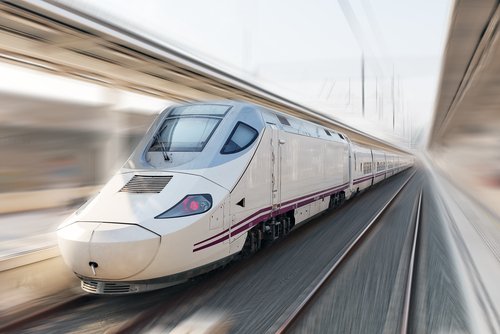
Boosting Connectivity: EU Allocates €411M for Murcia-Almería High-Speed Railway Line. Image: V_E / Shutterstock.com
On August 25, the European Commission (EC) made a significant announcement.
The EC stated they are earmarking €411 million from the European Regional Development Fund (ERDF) for the construction of the high-speed railway line connecting Murcia and Almería, with specific emphasis on the Nonduermas-Vera and Los Arejos-El Puche sections.
Brussels underscored that this new railway initiative will effectively enhance the connectivity of the Mediterranean Corridor within the Trans-European Transport Network.
This development is set to result in improved long-distance passenger services characterized by enhanced speed, frequency, and reliability.
Of notable importance, the Commission outlined that the entire railway line will be electrified and equipped with a sophisticated European level 2 railway traffic management system, further fortified by advanced safety technologies.
This railway line is strategically designed to accommodate passenger trains measuring up to 400 meters in length, as well as freight trains with a maximum length of 750 meters.
The former will attain speeds surpassing 250 kilometres per hour, while the latter will cap at 100 kilometres per hour.
Moreover, the Commission highlighted the significance of adopting a “standard gauge” across the Corridor, ensuring seamless interoperability and eradicating bottlenecks that might otherwise arise from the need to transfer goods at the French-Spanish border.
Elisa Ferreira, Commissioner for Cohesion and Reforms, lauded this pivotal infrastructure development, asserting that it will yield positive impacts not only within the region but beyond.
She stressed its role in simplifying and enhancing travel while presenting novel opportunities for passengers and businesses alike.
Ferreira also emphasized the environmental benefits, stating that the railway line will contribute to reducing emissions from road transport, aligning with the European Union’s overarching goal of achieving a greener, more sustainable future.
As a result, it is poised to become an increasingly attractive choice for both passengers and businesses.
Notably, the European Commission added that if essential project funding is secured by year-end, the EU intends to co-finance further track construction, electrification efforts, and enhancements to the signalling system in the forthcoming years.
Thank you for taking the time to read this article. Do remember to come back and check The Euro Weekly News website for all your up-to-date local and international news stories and remember, you can also follow us on Facebook and Instagram.






